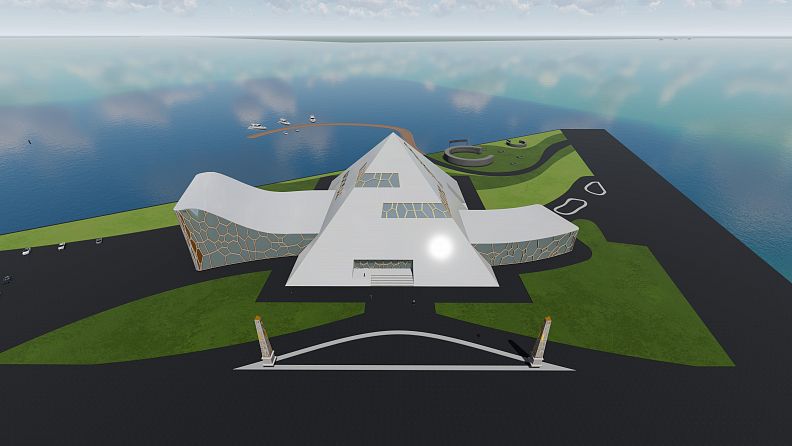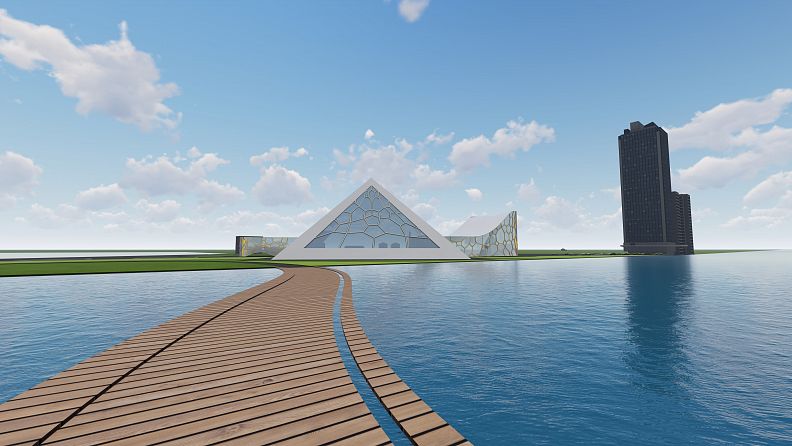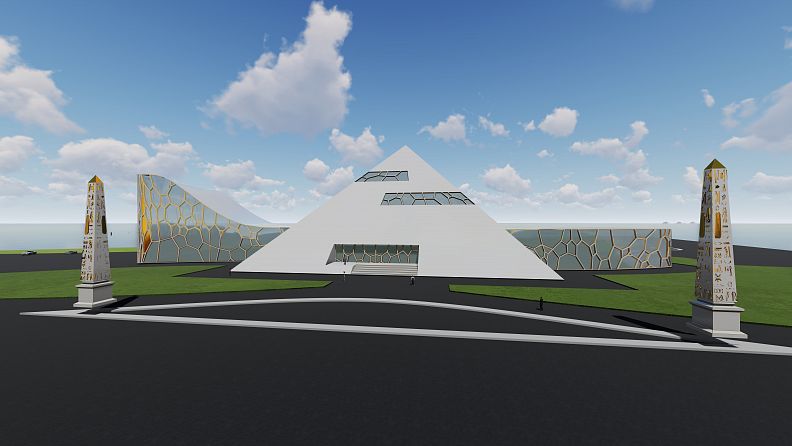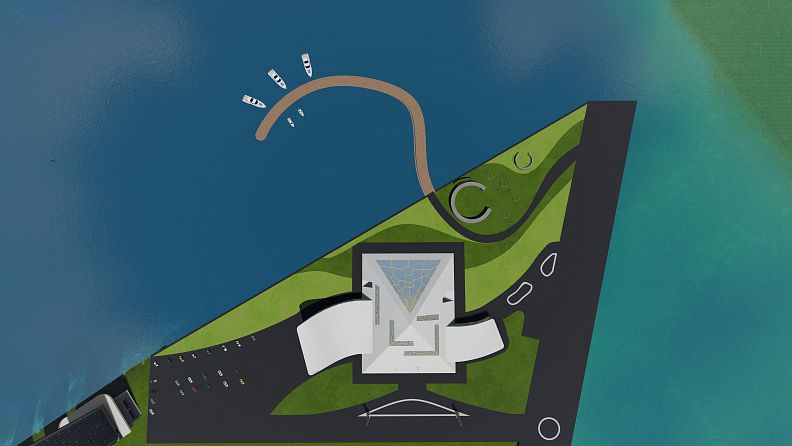Rosetta culture center

Project idea
Rosetta City has historical and cultural importance where it contains one-third of the Egyptian Islamic monuments and is considered as the second Islamic archaeological city after Cairo. As its global importance where the Rosetta Stone was discovered, which decode the alphabetic Ancient Egyptian language, Therefore, the government is seeking to put Rosetta city on the touristic, cultural, and archaeological global map The government put forward the idea of this project to become a cultural complex expresses the culture and history of the city Project Title Rosetta.
The project contains a Museum, library, and a theater, the museum is divided into three parts: permanent gallery, temporary gallery, outdoor gallery. also contains public spaces for the visitors and educational spaces, administration spaces, and other services for the museum like the shipment dock.
Project description
The museum was placed on the ground floor with an internal circulation that allows visitors to enter and exit the same place to get their luggage from the safety room. The museum services were placed in full as a separate part, the theater was divided into two floors (balcony) to allow the largest number of visitors, and the full theater services were placed as separate parts. The administration part was placed on the ground floor with a private entrance, where visitors could not meet with the administration’s employees. On the first floor, the temporary museum and library were placed with the educational part and some commercial services with the museum's (balcony). On the second floor, an art museum and some commercial services were placed with a huge cafeteria overlooking the view of the confluence of the Nile River with the Mediterranean Sea. The basement contains car parking and a separate part contains shipping and storage rooms for the antiques displayed in the museum. With a huge green core in the middle of the building to breathe life inside the building and visitors as well.
Concepts and Ideas :
Patterns of Islamic architectural style were used to serve as shading on the entire exterior glass of the building. The pyramid was used as a glorification of the ancient Egyptian civilization, whose surviving remains are among the wonders of the world. The shape that cuts the pyramid was used as an indication of the Nile River, which cuts Egypt into two halves, and in order to enhance continuity. the life of ancient Egypt depended entirely on the Nile River, and the Nile River is one of the most important sources of life in Egypt to this day.
Technical information
The winds coming from the Nile and the sea were used to enhance the interior ambiance of the museum.
The educational area and the museum were placed in the north direction to take advantage of the natural lighting and ventilation.
Architectural treatments were used to prevent the damages of drowning and flooding.
The historical importance of the city of Rashid was taken advantage of in the design work.
The service area and cargo dock are located in the basement.






